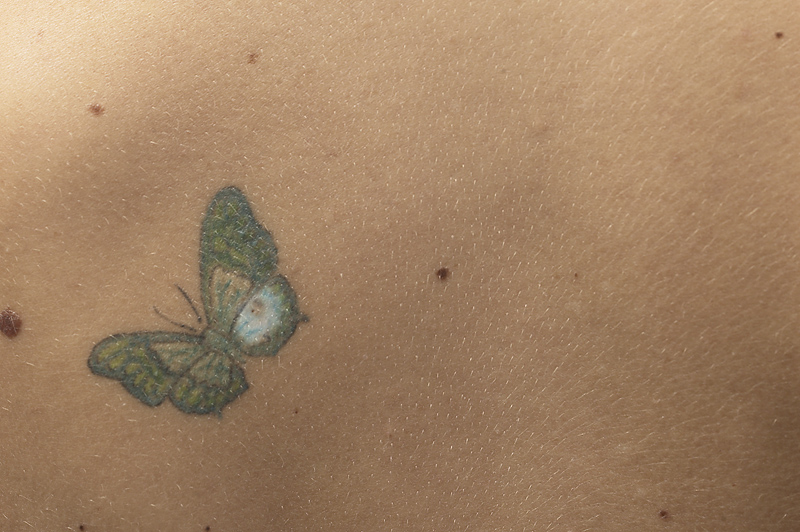
MONDAY, March 15 (HealthDay News) — The incidence of non-melanoma skin cancer has steadily increased since the 1990s, making it by far the most common form of cancer, affecting more people than all other cancers combined, two new studies find.
More than 2 million Americans on Medicare were treated for non-melanoma skin cancer in 2006, up from 1.6 million in 1992, according to one study. The other found that one in five 70-year-olds has been treated for non-melanoma skin cancer.
Researchers called non-melanoma skin cancer an “epidemic” that is only going to get worse as all those bathing beauties and sun worshippers from the 1960s, 1970s and 1980s get older, and their cumulative sun exposure racks up.
“We are dealing with a problem that is not going away,” said Dr. Howard Rogers, a dermatologist in Norwich, Conn., and lead author of one of the studies. “The number has kept going up and up at a rate of 4.2 percent every year, on average, from 1992 to 2006,” he said.
The studies are published in the March issue of the Archives of Dermatology.
The two types of non-melanoma skin cancer are basal cell and squamous cell. While basal cell carcinoma is slow-growing and rarely fatal, it can damage the surrounding tissue and bone if it’s not caught early, causing disfigurement when the cancer is removed.
Squamous cell carcinoma is also rarely fatal, though it can metastasize and spread to the lymph nodes and other organs, Rogers said. When caught early, squamous cell carcinomas are also highly treatable.
In the study by Rogers and colleagues, the researchers analyzed data from two Medicare databases and national surveys. They found the total number of procedures to treat skin cancer in the Medicare population increased by nearly 77 percent between 1992 and 2006. Between 2002 and 2006 alone, skin cancer procedures increased by 16 percent.
In the second study, Dr. Robert Stern of Beth Israel Deaconess Medical Center and Harvard Medical School in Boston, developed a mathematical model to estimate the prevalence of non-melanoma skin cancer in the United States.
With about 13 million white non-Hispanic U.S. residents having been treated for at least one non-melanoma skin cancer at the beginning of 2007, that means non-melanoma skin cancers have struck five times as many people as breast or prostate cancer. More people have had non-melanoma skin cancer than all other cancers combined over the last 31 years, according to the study.
Most of those who had a non-melanoma skin cancer had more than one, with the average being 1.6, he noted.
“This is only going to get worse,” said Dr. Suephy Chen, an associate professor of dermatology at Emory University School of Medicine in Atlanta. “Our population is aging. Those people who grew up in the 1970s and 1980s when there was not a big sun-protection message out there are now coming into their 50s and 60s and are starting to develop skin cancers.”
While non-melanoma skin cancers are the most common, melanoma is a serious worry. Though melanoma accounts for less than 5 percent of all skin cancers, it was expected to lead to an estimated 8,650 deaths in 2009, according to the American Cancer Society.
In a third paper in the same journal, researchers from the U.S. National Cancer Institute found survivors of one melanoma are about nine times as likely as the general population to develop a second melanoma.
Of nearly 90,000 patients who survived at least two months after an initial melanoma diagnosis between 1973 and 2006, about 12 percent developed one or more other primary cancers. One-fourth of those were additional melanomas, according to the study. Women with head and neck melanoma and patients younger than 30 had even higher increased risks of developing another melanoma.
As incidence has risen, so has the cost of treating melanoma. In adults 65 and older, melanoma treatment costs about $249 million annually, or about $28,000 per patient lifetime, according to a fourth study in the same journal by Chen and her colleagues at Emory University.
Catching melanoma early is critical for saving lives and controlling costs, Chen said. About 40 percent of the annual cost for melanoma goes to treating stage 4 (advanced) cancers, even though they account for only 3 percent of melanomas.
“It’s a huge difference in the cost of taking care of a stage 1 versus a stage 4 patient,” Chen said. “It makes a lot of sense to invest in early detection and prevention measures such that the economic burden is not so high.”
In an accompanying editorial, researchers from Erasmus University Medical Center in Rotterdam, the Netherlands, called for a “revised health strategy” that treats skin cancer as a chronic disease requiring not just a one-time treatment, but ongoing monitoring of patients, prevention and education.
To lessen your chances of getting skin cancer, dermatologists recommend applying broad-spectrum sunscreen liberally and often; wearing hats and other protective clothing when out in the sun; avoiding sun exposure when the sun’s rays are the strongest — between 10 a.m. and 3 p.m. — and never using tanning beds.
It’s especially important to take these steps with children and teens (to the extent they will listen), Rogers said. Skin cancer is turning up in younger and younger patients. In the past week or so, he removed non-melanoma cancer off the cheek of a 17-year-old boy and removed a melanoma from an 18-year-old girl.
And even if you have memories of basting yourself with baby oil, or you’re a retiree and loathe to miss your weekly tee time, it’s never too late to start decreasing your exposure.
“Think of sun exposure like putting money in a bank that you can’t withdraw,” Rogers said. “You can’t get rid of the damage you have, but continued sun exposure accelerates the rate at which you will develop new skin cancers. Protecting your skin from the sun will help decrease the rate.”
More information
The Skin Cancer Foundation has more on skin cancer.

